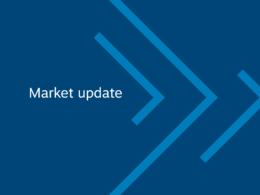
Risk mitigation accounting
Summary
The International Accounting Standards Board (“IASB”) is preparing to launch a major consultation on Risk Mitigation Accounting, the proposed new hedge accounting approach under IFRS 9 designed to better reflect dynamic, portfolio-level interest rate risk management. With the Exposure Draft expected to be published on 3rd December, stakeholders will have an important opportunity to provide input before the model is finalised.
This article outlines the purpose of the consultation, the key elements of the proposed model, and the potential implications for organisations that actively manage interest rate risk, helping you prepare for the changes that may shape the future of hedge accounting.
Risk Mitigation Accounting
What is it?
Risk Mitigation Accounting (“RMA”) – previously known as Dynamic Risk Management (“DRM”) – is the proposed new IFRS 9 hedge accounting model, designed to replace the current portfolio hedge accounting model available under IAS 39. The project to develop the model has been ongoing for over 10 years.
Who is it for?
Primarily financial institutions such as banks and insurers, particularly those who currently use the IAS 39 macro fair value hedge accounting model. It may be relevant to other organisations who manage interest rate risk on a portfolio basis, but has been designed with banks and insurers in mind.
What is the purpose?
The purpose is to align the hedge accounting model more closely with how organisations manage interest rate risk in practice. Whilst it is not expected to be completely aligned with how organisations consider their entire risk management position – for example, equity will not be included – it should allow greater flexibility in what can be included within hedging relationships, as well as allowing organisations to designate exposures on a net basis.
Why is it different?
Traditional IFRS 9 hedge accounting models require static hedge designations. In contrast, RMA allows more flexibility in managing exposures dynamically whilst achieving an accounting outcome of reduced volatility in profit and loss and equity.
The RMA model starts with the organisation's risk management strategy, which will need to be clearly documented, to align with how economic risk management decisions are made. This is consistent with current IFRS 9. The key elements of the RMA model – what is the open risk position, the acceptable risk range and how the organisation intends to use external derivatives to mitigate risk – are all derived from the organisation’s actual risk management practices. The measurement of effectiveness is expected to function like a cash flow-style ‘lower of’ test, but with the resulting adjustment recognised as an asset or a liability on balance sheet, instead of via other comprehensive income.
What is next?
On 3rd December 2025, the IASB is expected to publish the Exposure Draft of the new accounting standard in full. There will be a 240-day consultation period through 31 July 2026 during which the IASB will seek feedback. This is anticipated to include testing of the new model.
What does the future look like?
During the consultation period, affected organisations should take a keen interest in the contents of the Exposure Draft to understand the model and how this could be integrated into current operations. Close collaboration between treasury and accounting teams will be required to plan for and adapt to the new requirements.
Chatham can support helping you think through how RMA may apply to you and impact on your current execution and hedge accounting processes.
Contact us
Disclaimers
This material has been created by Chatham Financial Europe, Ltd. and is intended for a non-U.S. audience. Chatham Financial Europe, Ltd. is authorised and regulated by the Financial Conduct Authority of the United Kingdom with reference number 197251.
Chatham Hedging Advisors, LLC (CHA) is a subsidiary of Chatham Financial Corp. and provides hedge advisory, accounting and execution services related to swap transactions in the United States. CHA is registered with the Commodity Futures Trading Commission (CFTC) as a commodity trading advisor and is a member of the National Futures Association (NFA); however, neither the CFTC nor the NFA have passed upon the merits of participating in any advisory services offered by CHA. For further information, please visit chathamfinancial.com/legal-notices.
25-0115




